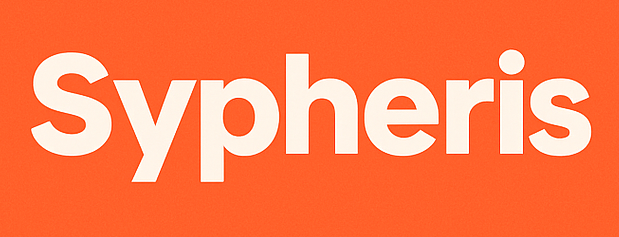Nearly 2 million applications for income based student loan repayment remain unprocessed as of April 30, 2025. This staggering backlog represents 96% of all pending applications, leaving millions of borrowers in financial limbo while they wait for relief.
We’ve been tracking this crisis closely, and the numbers are alarming. Despite the Department of Education approving only around 79,000 IDR applications during April 2025 – a processing rate of just 4% – approximately 43 million Americans continue struggling with student loan debt totaling around $1.5 trillion nationwide. At the current pace, clearing the entire backlog would take over two years.
The consequences are severe. Nearly 10 million borrowers could default on their loans within months due to these processing delays. Meanwhile, the PSLF Buyback program, which allows borrowers to reclaim months spent in deferment or forbearance, has processed only 1,472 of 49,318 applications.
Unfortunately, instead of focusing on processing applications for affordable repayment options, critics like the American Federation of Teachers argue that the Department of Education has prioritized debt collection. Throughout this article, We’ll examine why these delays are happening, what legal challenges are creating chaos in the system, and most importantly, what you can do if you’re one of the millions caught in this bureaucratic nightmare.
Education Department delays IDR processing for 2 million borrowers
The Department of Education’s struggle to process income-based student loan repayment applications has reached crisis proportions. According to court documents filed in May, the massive backlog impacts federal student loan borrowers nationwide who remain unable to access affordable payment options.
Backlog reaches 96% of pending applications
The situation is worse than initially reported. Court filings show exactly 1,985,726 IDR applications remained pending as of April 30, 2025 [1]. This represents approximately 96% of all income-driven repayment applications in the system [2]. Consequently, borrowers face extended waits for relief while their applications sit unprocessed.
“This filing confirms what borrowers have known for months: Their applications for loan relief have effectively been going into a void,” noted Winston Berkman-Breen, legal director at the Student Borrower Protection Center [1].
Only 79,000 applications processed in April
Progress has been painfully slow. In April, the Education Department processed just 79,349 IDR applications [2]. At this rate, clearing the existing backlog would take more than two years—assuming no new applications arrive [2]. Furthermore, April’s numbers likely understate true processing capacity since operations were not running at full strength until May 10 [2].
AFT President Randi Weingarten called the situation “outrageous and unacceptable,” adding, “This is the opposite of government efficiency. Millions of borrowers are being denied their legal right to an affordable repayment option” [1].
Court filings reveal scale of the problem
The revelations came through required progress reports after the American Federation of Teachers sued the Trump administration in March [3]. The lawsuit challenged the temporary shutdown of IDR processing, arguing it illegally prevented borrowers from enrolling in legally mandated affordable repayment plans [3].
The backlog began forming last summer when a federal appeals court issued an injunction blocking the SAVE plan [4]. The situation worsened in February when the court broadened its injunction, leading the department to temporarily remove online access to IDR applications [2].
Sarah Sattlemeyer, project director at New America and former Biden administration senior advisor, noted the backlog “has existed across both the Biden and Trump administrations” as a direct result of ongoing legal battles over student loan repayment programs [1].
Legal battles over SAVE plan halt student loan repayment progress
The ongoing legal battle over income-based student loan repayment programs has crippled the entire system, leaving millions of borrowers in financial uncertainty.
Eighth Circuit injunction freezes IDR system
The crisis began when several states sued to block the Saving on a Valuable Education (SAVE) plan. By February 2025, the Eighth Circuit Court of Appeals dramatically expanded its previous injunction, blocking the SAVE plan in its entirety [5]. This ruling went beyond just preventing loan forgiveness, as the court concluded that “the Secretary [of Education] must design ICR plans leading to actual repayment of the loans” but “has gone well beyond this authority by designing a plan where loans are largely forgiven rather than repaid” [6].
Subsequently, the court directed that the injunction should cover not only SAVE but also the forgiveness provisions of other repayment plans, including Pay As You Earn (PAYE) and Income-Contingent Repayment (ICR) [7].
Trump administration’s stop-work order explained
Following the court’s decision, the Trump administration took a maximalist approach. Rather than simply halting forgiveness under specific plans, the Education Department removed the online application for all income-driven repayment plans and ordered servicers to stop processing applications altogether [8].
Additionally, borrowers who had enrolled in SAVE were placed in an interest-free “SAVE forbearance” [9]. Although this paused payments and interest, time spent in this forbearance does not count toward Public Service Loan Forgiveness or IDR cancelation [9].
AFT lawsuit forces partial restoration of access
In response to these sweeping actions, the American Federation of Teachers sued the Department of Education in March 2025 [10]. The lawsuit argued that the administration’s interpretation “greatly exceeds” the Eighth Circuit’s ruling and had “wreaked havoc” on borrowers needing affordable payments [8].
Under pressure from this legal challenge, the Education Department agreed to restore the IDR application on March 26 [11]. Nevertheless, the department has not resumed processing applications, so borrowers remain unable to access lower monthly payments [11]. This partial victory still leaves more than one million borrowers waiting for relief.
PSLF Buyback program offers limited relief amid delays
Public service workers seeking student loan relief through the PSLF Buyback program face significant hurdles as processing delays mount. Created by the Biden administration in 2023, this program represents a potential solution for specific borrowers, yet data reveals that few applications are being processed.
What is the PSLF Buyback option?
The PSLF Buyback program allows borrowers to retroactively count periods spent in deferment or forbearance toward loan forgiveness under the Public Service Loan Forgiveness program [12]. Essentially, borrowers make a one-time lump sum payment equivalent to what they would have paid under an income-driven repayment plan during those periods [13]. Upon approval, these previously non-qualifying months then count toward the 120 payments required for PSLF forgiveness [14].
This option has become particularly important for the approximately 8 million borrowers placed in forbearance since federal courts blocked the SAVE plan [1]. Many qualifying public service workers now view the Buyback program as their only path to maintain progress toward forgiveness.
Who qualifies and how it works
Eligibility for PSLF Buyback is notably restrictive. The program is exclusively available to borrowers who:
- Already have 120 months of approved qualifying employment [3]
- Have an outstanding balance on their federal Direct loans [2]
- Were employed in qualifying public service during the forbearance/deferment periods [2]
- Will reach the threshold for complete loan forgiveness through the buyback [14]
Once approved, borrowers must pay the calculated amount within 90 days [13]. The payment typically equals the monthly income-driven repayment amount from before the deferment/forbearance period, multiplied by the number of months being bought back [13].
Why only 3% of applications have been processed
The processing statistics reveal a substantial backlog. Out of 50,790 PSLF Buyback applications, merely 1,472 were processed as of April 30, 2025 – approximately 3% of the total [12]. This leaves 49,318 applications pending [1].
Notably, since the Buyback is only available to borrowers for whom the recouped months will result in complete loan forgiveness, this indicates that potentially 49,318 public service workers who should qualify for immediate cancelation remain in limbo [1]. Many have waited far longer than the promised 90-day determination period, with no clear timeline for resolution [4].
Borrowers risk disqualification due to employment timing rules
A hidden pitfall threatens public service workers pursuing loan forgiveness amid the processing delays: the strict employment timing requirements. For many borrowers close to achieving forgiveness, these rules now represent a serious risk to their eligibility.
PSLF requires employment at time of application
The timing of employment creates a critical requirement for Public Service Loan Forgiveness. Beyond making 120 qualifying payments, borrowers must be employed by a qualifying employer at the exact time they submit their forgiveness application [15]. This requirement exists regardless of how long borrowers have worked in public service previously.
“Important: You must still be working for a qualifying employer at the time you submit your form for forgiveness,” states the Federal Student Aid website explicitly [15]. Moreover, PSLF offers no partial forgiveness – it’s an all-or-nothing program [15].
Layoffs and job changes threaten eligibility
Currently, even borrowers who have completed all 120 payments face disqualification risks because of:
- Retirement plans that can’t wait for delayed processing
- Career changes to better-paying private sector positions
- Involuntary layoffs from budget cuts or restructuring
Surprisingly, recent federal workforce reductions compound this threat. “At least 121,000 federal workers have been laid off or targeted for layoffs in the three months since President Donald Trump’s second term began,” according to reports cited in factual documents [15].
Advice: Stay in qualifying employment until processed
Given these risks, We recommend borrowers remain in qualifying employment throughout the entire application processing period. Specifically, those who’ve applied for PSLF Buyback or income-driven repayment plans should maintain their public service positions until all applications are fully processed.
Mark Kantrowitz, author of How to Appeal for More College Financial Aid, notes that leaving public service temporarily doesn’t permanently disqualify borrowers from PSLF [16]. Conversely, payments made during non-qualifying employment periods simply won’t count toward the required 120 payments [16]. Hence, the critical issue is timing – being employed in qualifying work precisely when submitting the final forgiveness application.
Conclusion
The Student Loan Crisis Demands Immediate Action
Throughout this article, We’ve examined the troubling landscape of student loan repayment delays affecting millions of Americans. Undoubtedly, the backlog of nearly 2 million unprocessed income-driven repayment applications represents a genuine crisis for borrowers caught in administrative limbo. Furthermore, the painfully slow processing rate—just 79,000 applications handled in April—means many will wait years for relief while their financial futures hang in the balance.
The legal battles surrounding the SAVE plan have consequently created widespread chaos. After the Eighth Circuit Court expanded its injunction, the Trump administration effectively shut down the entire IDR system temporarily. Although the American Federation of Teachers lawsuit forced partial restoration of access, processing remains severely constrained. Meanwhile, the PSLF Buyback program, designed specifically to help public service workers count previous forbearance periods, has approved merely 3% of applications.
Most importantly, borrowers face significant risks beyond just waiting. Those seeking Public Service Loan Forgiveness must remember the strict employment timing requirements—leaving qualifying employment before application approval could erase years of progress toward forgiveness. Additionally, the approximately 10 million borrowers approaching default need immediate solutions, not bureaucratic delays.
Therefore, We recommend taking several protective actions if you’re caught in this backlog. First, document all communications with your loan servicer. Second, consider submitting complaints to both the Department of Education and the Consumer Financial Protection Bureau. Third, maintain qualifying employment if you’re pursuing PSLF until your application receives final approval. Last but certainly not least, explore emergency forbearance options if you’re facing immediate financial hardship while waiting for IDR processing.
Above all, this situation demands accountability. The Education Department must allocate sufficient resources to process applications quickly and transparently. Until then, millions of hardworking Americans will continue bearing the financial and emotional burden of this administrative failure—a situation that grows more unacceptable with each passing day.
FAQs
Q1. How many student loan borrowers are affected by income repayment delays? Approximately 2 million student loan borrowers are facing delays in processing their income-driven repayment (IDR) applications. This backlog represents about 96% of all pending applications as of April 30, 2025.
Q2. What is causing the delay in processing income-driven repayment applications? The delays are primarily due to ongoing legal battles over the SAVE plan and other repayment programs. An injunction from the Eighth Circuit Court of Appeals led to a temporary shutdown of the IDR processing system, causing a massive backlog of applications.
Q3. What is the PSLF Buyback program? The PSLF Buyback program allows public service workers to retroactively count periods spent in deferment or forbearance toward loan forgiveness under the Public Service Loan Forgiveness program. Borrowers make a one-time lump sum payment to “buy back” these previously non-qualifying months.
Q4. Can borrowers lose their eligibility for Public Service Loan Forgiveness? Yes, borrowers can risk disqualification if they leave qualifying employment before their forgiveness application is processed. PSLF requires borrowers to be employed by a qualifying employer at the time they submit their forgiveness application, regardless of their previous years of service.
Q5. What should borrowers do while waiting for their applications to be processed? Borrowers should document all communications with their loan servicer, consider submitting complaints to the Department of Education and the Consumer Financial Protection Bureau, and maintain qualifying employment if pursuing PSLF. Those facing immediate financial hardship should explore emergency forbearance options.
References
[1] – https://protectborrowers.org/new-court-filing-reveals-backlog-of-2-million-borrower-payment-plan-applications/
[2] – https://www.laurelroad.com/public-service-loan-forgiveness/pslf-buyback-program/
[3] – https://www.forbes.com/sites/adamminsky/2025/05/06/big-update-for-student-loan-forgiveness-buyback-program-coming-after-months-of-uncertainty/
[4] – https://www.studentloanplanner.com/idr-pslf-application-delays/
[5] – https://www.accesslex.org/news-tools-and-resources/save-plan-lawsuits-what-know-how-help
[6] – https://www.consumerfinancemonitor.com/2025/02/25/eighth-circuit-broadens-injunction-prohibiting-implementation-of-save-federal-student-loan-repayment-plan-calls-into-question-legality-of-paye-and-repaye-forgiveness-provisions/
[7] – https://www.nasfaa.org/news-item/35688/Court_Ruling_Affirms_Blocking_of_SAVE_Plan_While_Next_Steps_for_the_Program_Remain_Uncertain
[8] – https://www.nasfaa.org/news-item/35883/aft_sues_ed_for_shutting_down_access_to_idr_plans_hindering_progress_toward_pslf
[9] – https://studentloanborrowerassistance.org/part-2-the-current-impact-on-borrowers-of-lawsuits-challenging-the-save-plan-and-the-removal-of-idr-applications/
[10] – https://www.aft.org/press-release/aft-sues-us-department-education-demands-justice-student-loan-borrowers-blocked
[11] – https://protectborrowers.org/update-under-pressure-ed-will-restore-idr-app-but-not-immediately-resume-processing/
[12] – https://www.forbes.com/sites/adamminsky/2025/05/21/nearly-50000-student-loan-forgiveness-applications-are-pending-with-no-clear-end-point/
[13] – https://www.nerdwallet.com/article/loans/student-loans/pslf-buyback-program
[14] – https://studentaid.gov/help-center/answers/article/what-is-pslf-buyback-process
[15] – https://www.forbes.com/sites/shaharziv/2025/05/21/major-update-for-9-million-borrowers-about-huge-student-loan-forgiveness-threat-from-pslf-and-idr-delays/
[16] – https://www.forbes.com/sites/robertfarrington/2022/12/15/what-happens-to-your-student-loans-if-you-leave-public-service/



